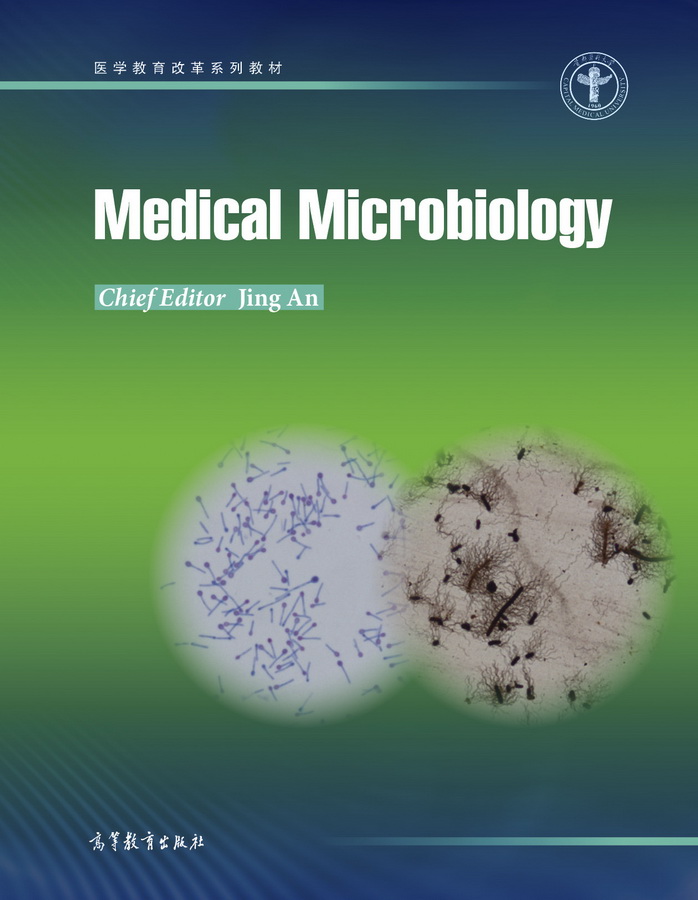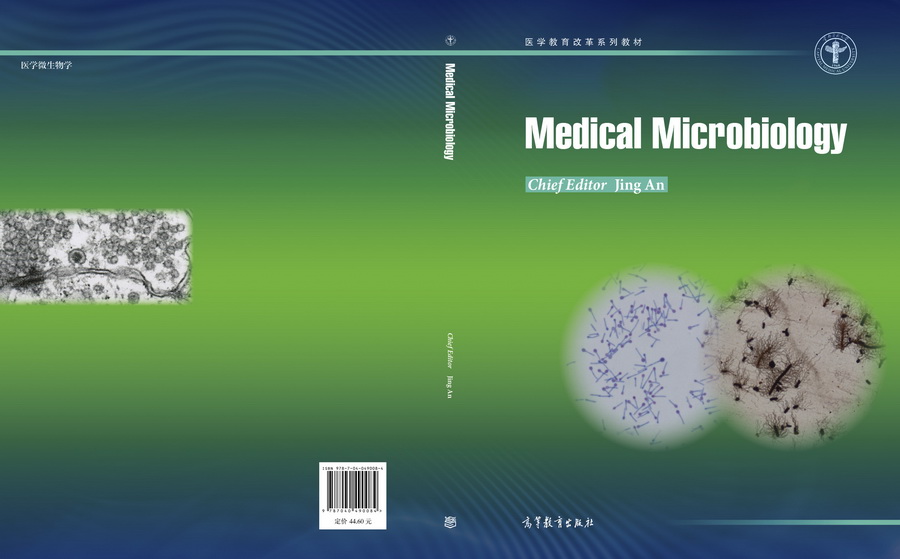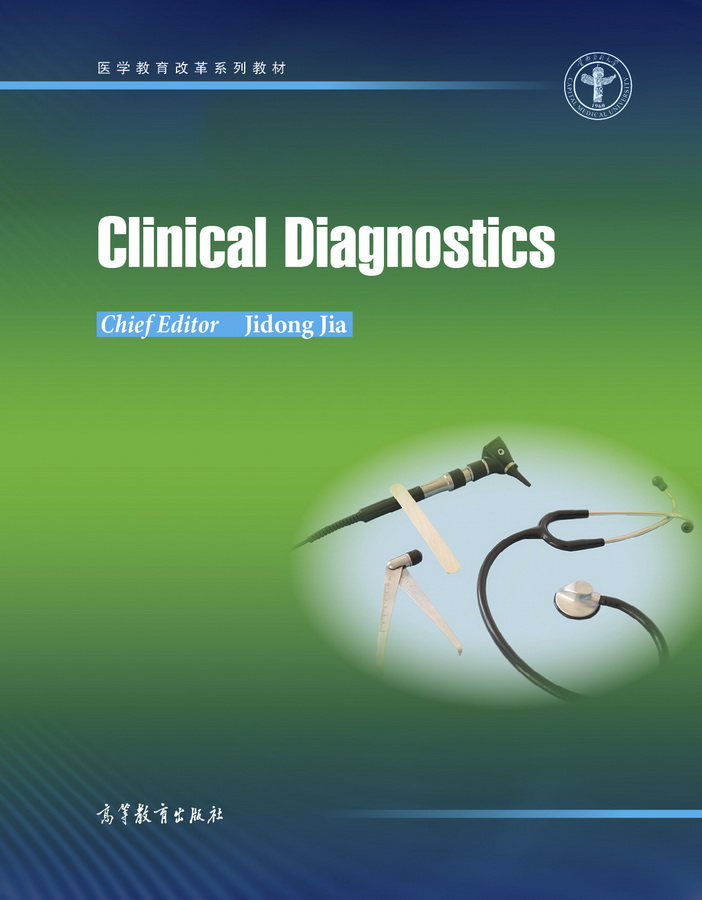Medical Microbiology(医学微生物学)
作者: 安静
出版时间:2018-02
出版社:高等教育出版社
- 高等教育出版社
- 9787040490084
- 1版
- 204791
- 40261411-9
- 平装
- 大大16开
- 2018-02
- 640
- 278
- 医学
- 基础医学类
- R392
- 医学
- 本科
Front Matter
Chapter 1Overview
1.1 Microorganisms
1.2 Medical microbiology
PART 1 BACTERIOLOGY
Chapter 2Morphology and Structures of Bacteria
2.1 Size and shapes of bacteria
2.2 Structure of bacterial cells
2.3 Morphological study of bacteria
Chapter 3Physiology of Bacteria
3.1 Physical and chemical properties of bacteria
3.2 Bacterial growth and multiplication
3.3 Metabolism of bacteria
3.4 Artificial cultivation of bacteria
3.5 Bacterial taxonomy
Chapter 4Disinfection and Sterilization
4.1 Physical methods of sterilization and disinfection
4.2 Chemical methods of sterilization and disinfection
4.3 Factors influencing sterilization and disinfection
Chapter 5Genetics of Bacteria
5.1 Bacterial genome
5.2 Bacteriophage
5.3 Genetic variation
5.4 Gene transfer and rearrangement
5.5 Applications of bacterial heredity and variation
Chapter 6Pathogenesis of Bacterial Infection and Host Defense
6.1 Bacterial infection and pathogenesis
6.2 Host defense for bacterial infections
Chapter 7Principles of Laboratory Diagnosis, Prevention and Treatment of Bacterial Infection
7.1 Laboratory diagnosis of bacterial infection
7.2 How to prevent bacterial infection
7.3 Treatments for bacterial diseases
Chapter 8Pathogenic Coccus
8.1 Staphylococci
8.2 Streptococci
8.3 Neisseria
Chapter 9Enterobacteriaceae
9.1 Escherichia
9.2 Shigella
9.3 Salmonella
9.4 Other Enterobacteriaceae
Chapter 10Vibrio
10.1 Vibrio cholerae
10.2 Vibrio parahaemolyticus and other vibrios
Chapter 11Helicobacter pylori and Campylobacter jejuni
11.1 Helicobacter pylori
11.2 Campylobacter jejuni
Chapter 12Anaerobic Bacteria
12.1 Clostridium tetani
12.2 Clostridium perfringens
12.3 Clostridium botulinum
12.4 Non spore forming anaerobes
Chapter 13Corynebacterium
13.1 Corynebacterium diphtheriae
Chapter 14Mycobaterium
14.1 Mycobacterium tuberculosis
14.2 Mycobacterium leprae
Chapter 15Zoonotic Bacteria
15.1 Brucella
15.2 Bacillus anthracis
15.3 Yersinia
15.4 Yersinia pestis
15.5 Other bacteria of Yersinia
Chapter 16Other Bacteria
16.1 Haemophilus
16.2 Bordetella
16.3 Legionella
16.4 Pseudomonas
16.5 Actinomyces
16.6 Nocardia
Chapter 17Spirochetes
17.1 Treponema
17.2 Leptospira
17.3 Borrelia
Chapter 18Chlamydia
18.1 Overview
18.2 Major pathogenic Chlamydia
Chapter 19Mycoplasma
19.1 Overview
19.2 Major pathogenic mycoplasmas
Chapter 20Rickettsia
20.1 Overview
20.2 Major pathogenic Rickettsiae
PART 2 VIROLOGY
Chapter 21Morphology and Structure of Viruses
21.1 Size and morphology
21.2 Structure and function
21.3 Virus classification
Chapter 22Replication and Mutation of Viruses
22.1 Replication
22.2 Resistance and variation
Chapter 23Viral Infection and Antiviral Immunity
23.1 Viral transmission and infection
23.2 Mechanism of viral pathogenesis
23.3 Antiviral immunity
Chapter 24Diagnosis of Viral Infection
24.1 Specimen collection and shipment
24.2 Virus isolation
24.3 Viral antigen detection
24.4 Viral antibody detection
24.5 Virus nucleic acid detection
24.6 Rapid diagnosis of viral infection
Chapter 25Control of Viral Infection
25.1 Artificial active immunization
25.2 Artificial passive immunization
25.3 Antiviral therapy
Chapter 26Respiratory Viruses
26.1 Influenza virus
26.2 Paramyxovirus
26.3 Other respiratory viruses
Chapter 27Enteroviruses and Gastroenteritis related Viruses
27.1 Poliovirus
27.2 Other enteroviruses
27.3 Acute gastroenteritis viruses
Chapter 28Hepatitis Viruses
28.1 Hepatitis A virus
28.2 Hepatitis B virus
28.3 Hepatitis C virus
28.4 Hepatitis D virus
28.5 Hepatitis E virus
28.6 Hepatitis G virus
Chapter 29Herpesvirus
29.1 Herpes simplex virus
29.2 Varicella zoster virus
29.3 Cytomegalovirus
29.4 Epstein Barr virus
29.5 New human herpes viruses
Chapter 30Retroviruses and Tumor related Viruses
30.1 Human immunodeficiency virus
30.2 Human T cell leukemia virus
30.3 Tumor related viruses
Chapter 31Encephalitis Virus
31.1 Japanese encephalitis virus
31.2 Tick borne encephalitis virus
Chapter 32Hemorrhagic Fever Virus
32.1 Hantavirus
32.2 Crimean Congo hemorrhagic fever virus
32.3 Dengue virus
Chapter 33Other Important Viruses
33.1 Rabies virus
33.2 Poxvirus
33.3 Parvovirus B19
Chapter 34Prion
34.1 Biological properties
34.2 Pathogenesis and immunity
34.3 Laboratory diagnosis and prevention
PART 3 MYCOLOGY
Chapter 35Pathogenic Fungi
35.1 Biological properties
35.2 Pathogenesis
35.3 Laboratory diagnosis
35.4 Prevention and treatment
35.5 Fungal disease











